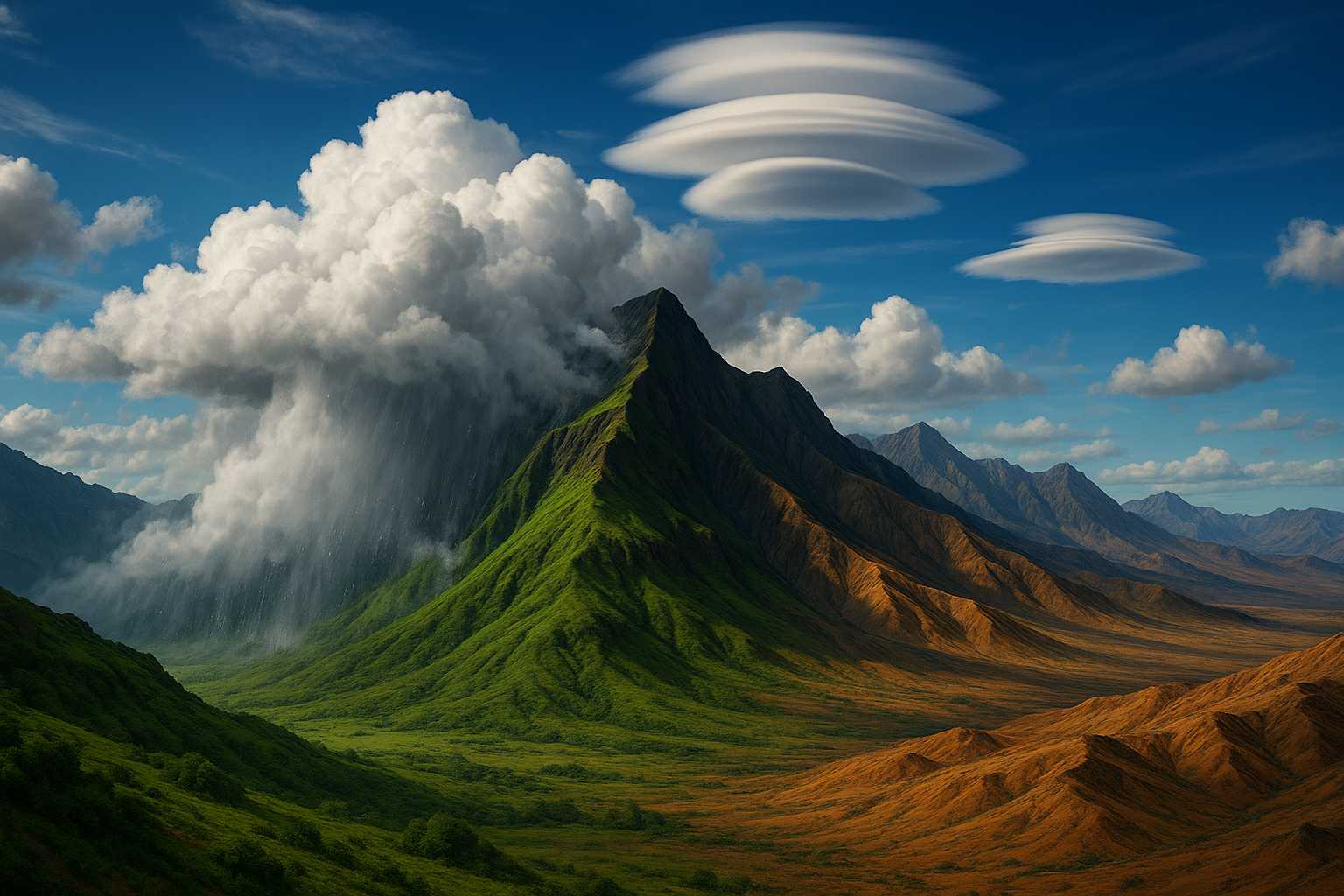As a meteorologist, I often find myself captivated by the subtle but powerful processes that shape our daily weather. One such phenomenon is orographic lift—a process where the landscape itself, especially mountains, becomes an architect of the atmosphere, sculpting clouds, storms, and even shaping entire ecosystems. Let’s unravel how this fascinating effect influences weather patterns both locally and globally.
What is Orographic Lift?
Orographic lift occurs when an air mass is forced to ascend over a topographic barrier—usually a mountain range. As the air rises up the slope, it cools adiabatically (without exchanging heat with its environment). Cooler air can hold less moisture, so as the air climbs higher, water vapor condenses into clouds and, often, precipitation.
Rain Shadows: Dry on One Side, Lush on the Other
This process explains why mountainous regions often have dramatically different climates on their windward and leeward sides. The windward side—where the air ascends—tends to be lush and green due to frequent rain or snow. In contrast, the leeward side (the downwind slope) experiences much drier conditions, often referred to as a "rain shadow." The Cascade Range in the Pacific Northwest and the Andes in South America are classic examples of this phenomenon.
Orographic Clouds and Precipitation
Think of those lens-shaped clouds hovering over mountain peaks—the so-called lenticular clouds. These remarkable formations are direct products of orographic lift, marking areas where air is steadily rising and cooling. Beyond their visual appeal, these clouds can bring persistent, localized precipitation, influencing water resources for entire regions.
Global Impacts of a Local Effect
Orographic lift doesn’t just matter for mountain hikers or farmers at the foothills. On a grand scale, it affects river systems, biodiversity, and even human settlements. Many of the world’s most fertile regions—and largest cities—owe their character to the weather patterns set in motion by nearby mountains.
In summary, orographic lift is a striking example of how Earth’s surface and atmosphere work together to make our planet’s weather endlessly fascinating and complex. So next time you see a mountain shrouded in clouds, you’ll know: the landscape isn’t just scenery—it’s shaping the very air we breathe.
—Rabir


Leave a Reply